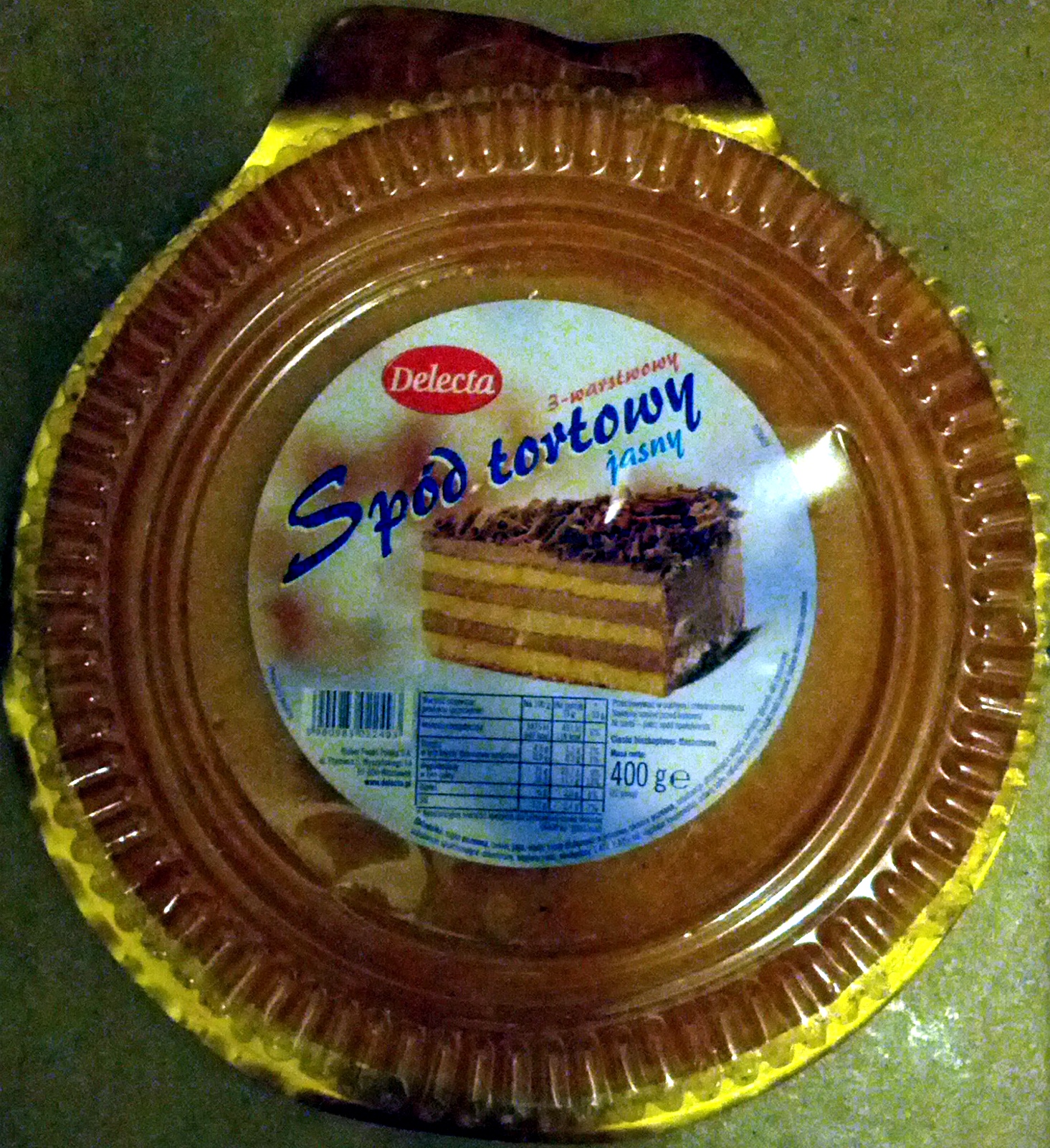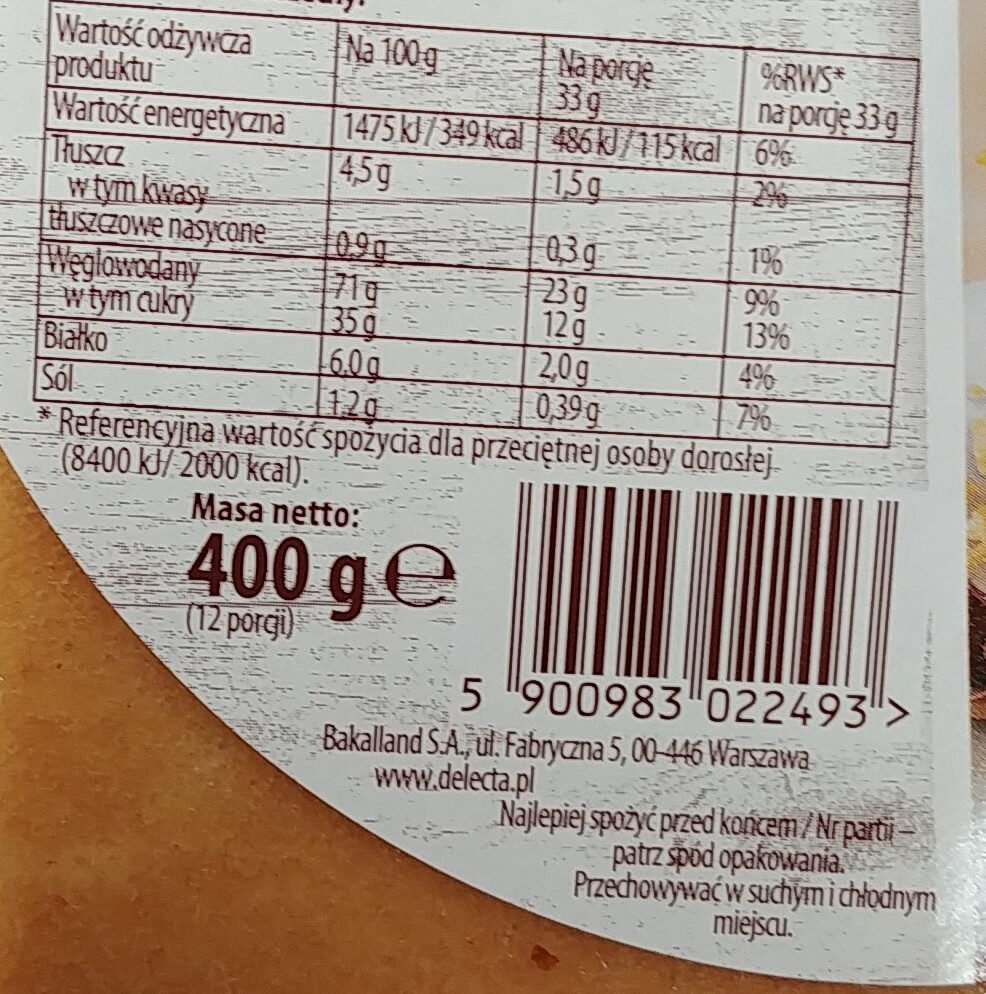Spód tortowy jasny 3-warstwowy - Delecta - 400g
This product page is not complete. You can help to complete it by editing it and adding more data from the photos we have, or by taking more photos using the app for Android or iPhone/iPad. Thank you!
×
Barcode: 5900983022493 (EAN / EAN-13)
Common name: Spód tortowy jasny 3-warstwowy
Quantity: 400g
Packaging: Plastic
Categories: Snacks, Desserts, Sweet snacks, Biscuits and cakes, Cakes
Manufacturing or processing places: Polska
Link to the product page on the official site of the producer: http://www.delecta.pl
Stores: Auchan
Countries where sold: Poland
Matching with your preferences
Environment
Packaging
Transportation
Report a problem
Data sources
Product added on by tacinte
Last edit of product page on by packbot.
Product page also edited by elttor, openfoodfacts-contributors, pyrka.
If the data is incomplete or incorrect, you can complete or correct it by editing this page.











